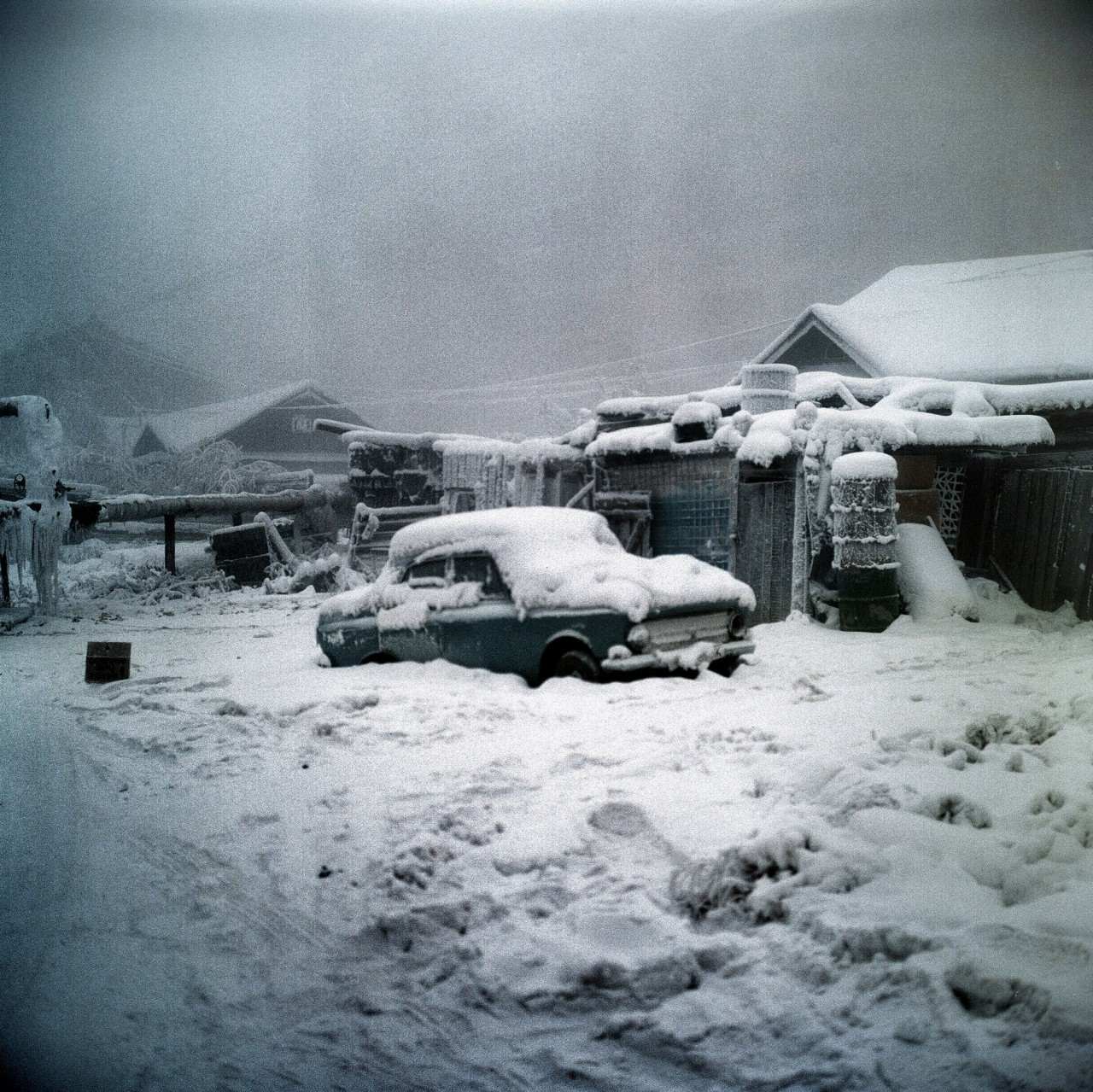In the harsh winter of 1947, the tiny town of Snag, located in the scenic Yukon region of Canada, experienced unprecedented weather conditions. Over the course of this cold spell, temperatures plummeted to an astonishing -83°F (-63.9°C) on February 3, 1947, making it the coldest day ever recorded in Canadian history. These extreme conditions brought about a series of awe-inspiring phenomena, including the bizarre ability to hear people speaking from four miles away, breath turning to powder, and the booming of river ice resembling gunshots. So what really happened in the Snag’s unbelievable sub-zero world on that day.

A chilling soundscape
Imagine standing amidst the frigid air, bundled in layers upon layers of warm clothing, and hearing what seemed to be conversations from afar. According to the accounts of Snag’s residents, during this extraordinary cold spell, sound carried much farther and clearer than usual. Astonishingly, one could discern conversations from a distance of four miles, an incredible feat that was virtually unheard of during normal weather conditions.
Frozen breath becoming powder
Another intriguing phenomenon that baffled Snag’s inhabitants was the effect the extreme cold had on their breath. As they exhaled, their breath would transform into powdery particles before gracefully descending to the frozen ground. This ethereal transformation added an otherworldly quality to the already surreal winter landscape. For many, this strange occurrence only further emphasized the chilling power of Mother Nature in Snag.
The resounding booms of river ice
As if the experiences above were not enough, the inhabitants of Snag also witnessed the extraordinary booming sounds emanating from the frozen Yukon River. The snapping and cracking of the ice reverberated through the town, echoing like gunshots and creating an eerie soundscape that could easily send shivers down one’s spine.
Science behind the strange phenomena of Snag
The combination of low temperatures and changing air density played a crucial role in creating these mind-boggling phenomena. In extreme cold, the air becomes denser, allowing sound waves to travel much further and clearer than in regular weather conditions. As a result, conversations could be heard across long distances, giving Snag an almost paranormal aura. Similarly, the moisture in exhaled breath rapidly froze and crystallized due to the low temperatures, transforming it into a powder-like substance. Lastly, the intense cold put immense pressure and tension within the solidified river’s surface, causing it to crack and boom, generating sounds similar to gunshots.
Frigid winter: Canada’s beauty
When it comes to extreme weather, Canada is well-known for its frigid winters. Here are the 10 coldest places in Canada — ever, or at least since they’ve been keeping weather records:
- -63°C — Snag, Yukon — February 3, 1947
- -60.6°C — Fort Vermilion, Alberta — January 11, 1911
- -59.4°C — Old Crow, Yukon — January 5, 1975
- -58.9°C — Smith River, British Columbia — January 31, 1947
- -58.3°C — Iroquois Falls, Ontario — January 23, 1935
- -57.8°C — Shephard Bay, Nunavut — February 13, 1973
- -57.2°C — Fort Smith, Northwest Territories — December 26, 1917
- -56.7°C — Prince Albert, Saskatchewan — February 1, 1893
- -55.8°C — Dawson City, Yukon — February 11, 1979
- -55.6°C — Iroquois Falls, Ontario — February 9, 1934
While these glacial winters of the land deter some, others see Canada’s coldest days as an opportunity to fully experience the beauty and resilience that this vast country has to offer.
Embracing the challenges
Instead of shying away from the bitter cold, Canadians have learned to embrace and celebrate the challenging weather. Many communities across the country hold winter festivals, such as Quebec City’s annual Winter Carnival, which showcase a myriad of outdoor activities including ice sculptures, dog sledding, and ice canoe races. These events provide an incredible opportunity for Canadians and visitors alike to immerse themselves in the joy and excitement of the season.
Frozen wonders
Extreme cold temperatures also create a unique phenomenon that captures the imagination of locals and tourists alike. As lakes, waterfalls, and rivers freeze over, awe-inspiring natural wonders emerge. For instance, the Abraham Lake in Alberta transforms into a breathtaking canvas of frozen bubbles trapped under the ice. These mesmerizing formations, created by the release of methane gas from decaying plants, have become an essential subject for photographers who travel from around the world to capture this captivating sight.
Adventures in the Great White North
Canada’s coldest days serve as a cue for adventure enthusiasts to explore the country’s winter wonderland, offering activities like cross-country skiing, ice climbing, snowshoeing, and snowmobiling. Outdoor enthusiasts flock to national parks, such as Banff and Jasper in Alberta or Algonquin in Ontario, to marvel at snow-capped peaks, pristine frozen lakes, and panoramic landscapes, making for unforgettable experiences and incredible photo opportunities.
Final words
While enduring extreme cold temperatures might not be everyone’s cup of tea, Canada’s coldest day provides a unique opportunity to experience the breathtaking beauty and remarkable resilience of this incredible country. From winter festivals and frozen wonders to thrilling outdoor adventures, the bone-chilling temperatures offer a chance to explore and appreciate Canada’s natural wonders in their frozen splendor. On the other side, Snag’s chilling tale unfolds as an extraordinary moment in Canadian history. It serves as a reminder of nature’s awe-inspiring power and its ability to leave us astounded and humbled.
After reading about the Canada’s coldest day, read about 1816: The “year without a summer” brings disasters to the world.




